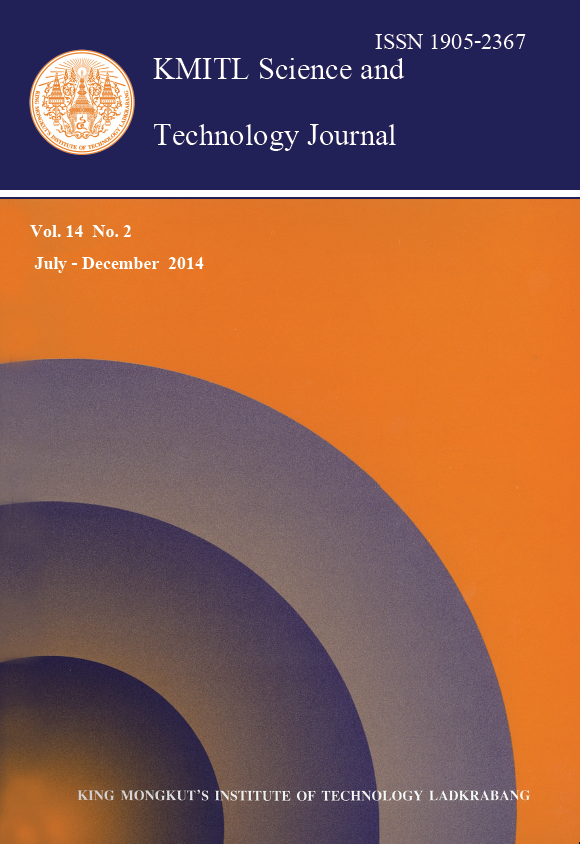Approximation of Amplitude Equalizer Based on q-Bessel Polynomials
Main Article Content
Abstract
In this paper, a method to equalize the amplitude distortion of linear slope signal in waveform transmission is presented. In order to design the linear gain slope amplitude equalizer with maximally flat group delay, a non-minimum phase network technique is utilized. Thus, the transmission zeros possess quadrant symmetry and the denominator of the transfer function is approximated by using q-Bessel polynomials. As it is known, the q-Bessel polynomial has more parameter to adjust than does the simple Bessel polynomials. In order to investigate the performance of the design equalizer. Simulation of the proposed gain slope response is carried out. Moreover, the stability of the approximated transfer function is investigated by using a Mihailov’s criterion. It is shown that the simulation results agree with the theoretical ones.
Keywords: q-Bessel Polynomials, non-minimum phase, amplitude equalizer, Mihailov’s criterion.
*Corresponding author: E-mail: kcvanvis@kmitl.ac.th
Article Details
Copyright Transfer Statement
The copyright of this article is transferred to Current Applied Science and Technology journal with effect if and when the article is accepted for publication. The copyright transfer covers the exclusive right to reproduce and distribute the article, including reprints, translations, photographic reproductions, electronic form (offline, online) or any other reproductions of similar nature.
The author warrants that this contribution is original and that he/she has full power to make this grant. The author signs for and accepts responsibility for releasing this material on behalf of any and all co-authors.
Here is the link for download: Copyright transfer form.pdf
References
[2] Janchitrapongvej, K., Seatia, S., Benjangkaprasert, C. and Tangtisanon, P., 2000. Capacitive Double Layer URC Line and Its Application to Active Filter. TENCON, 2(24-27), 23-25.
[3] Cameron, W. A., 1959. Coaxial Cable Performance. Electronics, Radio Engineer, Septem. pp. 349-352.
[4] Krall, H.L. and Frink, O., 1949 A New Class of Orthogonal Polynomails: The Bessel Polynomials. Trans. Amer. Math. Soc. 65(1), 100-115.
[5] Thomas Ernst, 2006. q-Bernoulli and q-Euler Polynomials. an Umbral Approach. International Journal of Difference Equations, 1(1), 31-80.
[6] Karni, S. and Ahmed, N., 1978. An Approximation to a Specified Magnitude using Non-Minimum Phase Networks. Proc. IEEE CAS, 817-825.
[7] Brafman, F., 1953 A Set of Generating Function for Bessel Polynomials. Proc. Amer. Math Soc. 41, 275-277.


